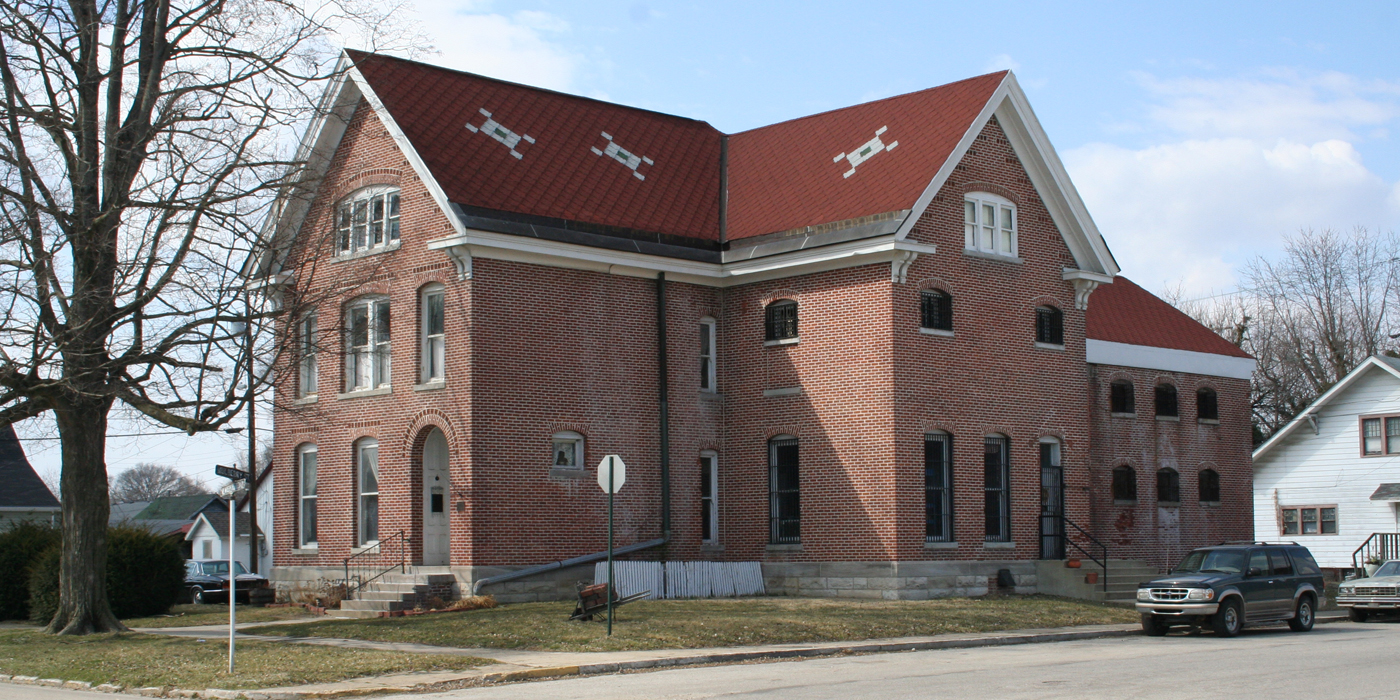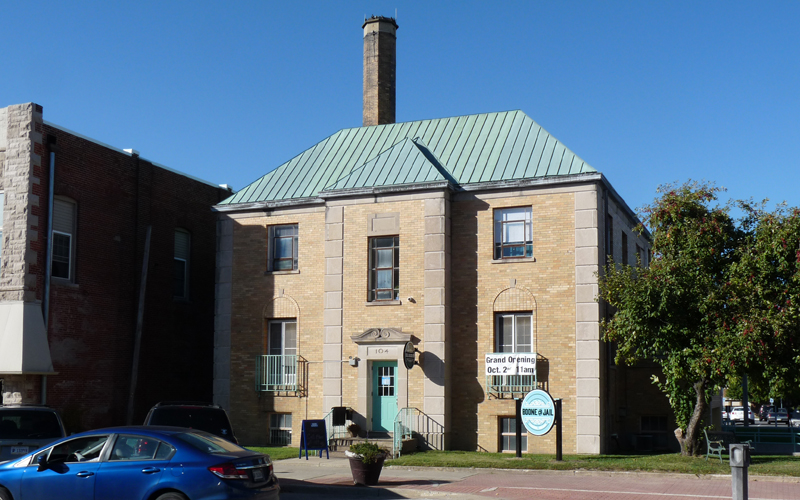NEWS
Creative Reuses Transform Historic Jails
Developers are using outside-the-box thinking to turn historic jails in Lebanon and Martinsville into a restaurant, bar, distillery, and senior apartments.

Good Behavior
In a contest of the hardest historic buildings to repurpose, jails would rank near the top, given their highly specialized and functionally obsolete spaces. However, it’s not an insurmountable challenge. In two Central Indiana communities, developers have adapted historic jails to new purposes.
In Lebanon, you can hoist a beer at Cell Block 104, a restaurant and bar in the reincarnated old Boone County Jail and Sheriff’s Residence, a handsome 1938 Renaissance Revival-style structure on the courthouse square at 104 W. Washington Street. The original cell block features a bar behind bars, and rows of cozy booths in the original jail cells. Soon, the building will also house the Boone Co. Jail Distillery, a producer of whiskey, vodka, gin, and rum.
Vacant and neglected after being decommissioned as a jail in 1992, the building won a matching grant from the Lebanon Historic Preservation Commission that helped the then-owner repair the roof, windows, and masonry. Current owner Jail Property, LLC converted the structure to its present use.

Jail Property LLC turned Boone County’s historic jail and sheriff’s residence into a dining destination, complete with seating inside cells.
In downtown Martinsville, the National Register-listed historic jail and sheriff’s residence will soon be converted into five senior housing units by Indianapolis-based developer Flaherty and Collins Properties, which took possession of the building in mid-December. The original cell block will be repurposed as storage for the new residents. The developer paired the jail with adaptive use of two other Martinsville structures, a former sanitarium and a commercial building on the courthouse square, tapping Rehabilitation Investment Tax Credits to support work on the jail and sanitarium. Construction should be complete in 2017.
Our affiliate Morgan County Historic Preservation Society (MCHPS) sold the property to Flaherty and Collins. Indiana Landmarks holds a protective covenant on the 1890 Italianate structure, so we’ve joined MCHPS in reviewing and approving the design and rehab plan. Another bonus: revenue from the sale gives MCHPS resources to direct to other preservation initiatives.
To learn more about the projects, contact Mark Dollase, Vice President for Preservation Services, mdollase@indianalandmarks.org, 317-639-4534.
Stay up to date on the latest news, stories, and events from Indiana Landmarks, around the state or in your area.
